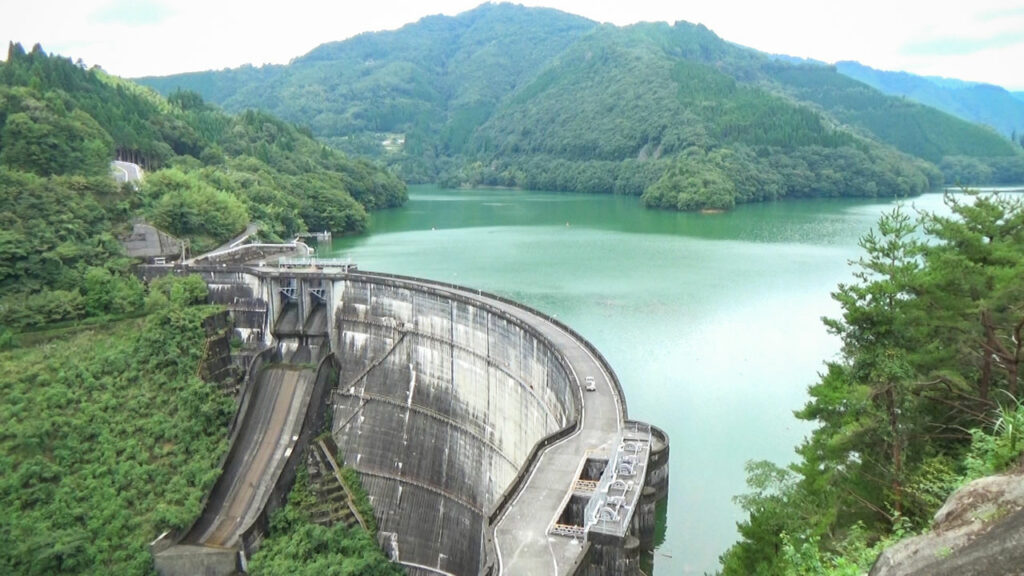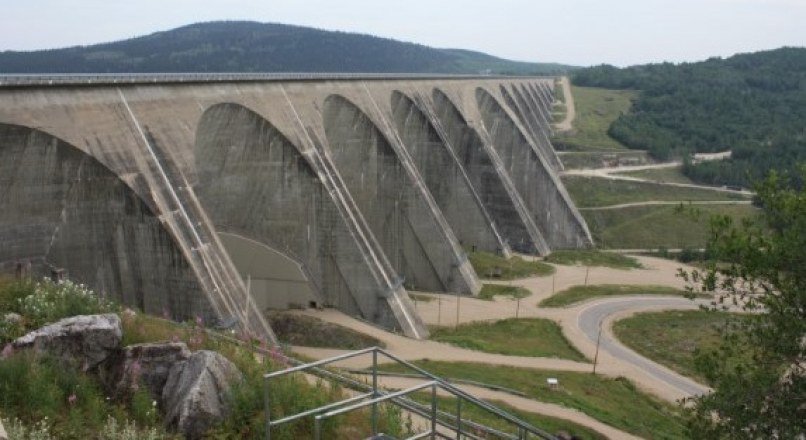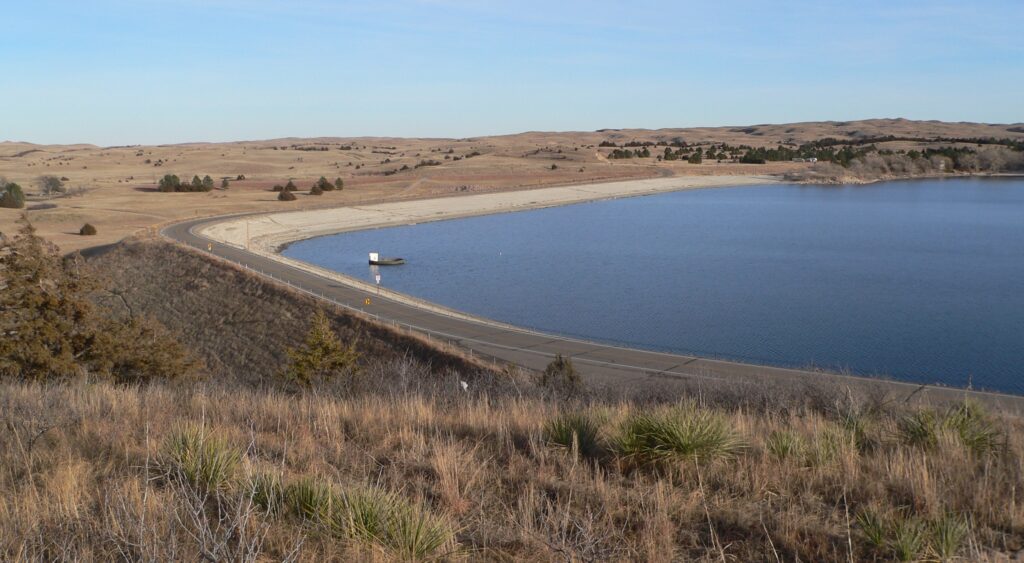
Introduction
- Dam is a structure built across a stream, river or estuary to retain water.
- Dam is a solid barrier constructed at a suitable location across a river valley to store flowing water or stream valley for impounding huge volume of water for multipurpose.
- Dams are made from a variety of materials such as rock, steel and wood.
Types of Dams
- Gravity Dams
- Buttress Dams
- Arch Dams
- Earthen Dams
Gravity Dams
- A gravity is a solid concrete structure, generally having a triangular profile, which is so designed that it can safely stand against the pre calculated volume of water by virtue of its weight.
- Gravity dams are dams which resist the horizontal thrust of the water entirely by their own weight.
- These dams are heavy and massive wall-like structures of concrete in which the whole weight acts vertically downwards.
- As the entire load is transmitted on the small area of foundation, such dams are constructed where rocks are strong and stable.

Buttress Dams
- Buttress dams are derived from gravity dams. This type of dams are supported uses thin concrete slab which is supported from downstream side by buttresses.
- Buttress dams are dams in which the face is held up by a series of supports.
- It uses multiple reinforced columns to support the dams. Since it has relatively thin structure so there is considerable amount of saving of concrete material.
- It is a gravity dam reinforced by structural supports.
- It is a support that transmits a force from a roof or wall to another supporting structures.
Arch Dams
- It is an arch-shaped solid structure made up of concrete which is designed in such a way that a major part of the thrust forces acting on the dam are transmitted to arch.
- These type of dams are concrete or masonry dams which are curved or convex upstream in plain.
- An arch dam is a curved dam which is dependent upon arch action for its strength.
- This shape helps to transmit the major part of the water load to the abutments.
- Arch dams are built across narrow, deep river gorges, but now in recent years they have been considered even for little wider valleys.

Earthen Dams
- These are non-rigid structures which are built over wide valleys with varying foundations. These are trapezoidal in shape and are built of single type of material or combination of more than one material.
- The main advantage of these dams is that it can be constructed on weak foundation.
- Earth dams are constructed where the foundation or the underlying material or rocks are weak to support the masonry dam or where the suitable strong rocks are at greater depth.
- Earthen dams are relatively smaller in height and broad at the base.
- They are mainly built with clay, sand and gravel, hence they are also known as Earth fill dam or Rock fill dam.
Terminology
- Heel- Contact with the ground on the upstream side.
- Toe- Contact on the downstream side.
- Abutment- Sides of the valley on which the structures of the dam rest.
- Galleries- Small rooms like structures left within the dam for checking operations.
- Diversion Tunnel- Tunnels are constructed for diverting water before the construction of dam.
- Spillways- It is the arrangements near the top to release the excess water of the reservoir to downstream side.
- Sluice Way- An opening in the dam near the ground level, which is used to clear the silt accumulation in the reservoir side.
Geological Investigation
- The area should be natural valley preferably ending in narrow gorge.
- The topographical location should be chosen according to our requirements.
- The rock structure on which the dam will be constructed should be strong enough to sustain the weight of dam and water stored in it and should be waterproof.
- The flow of water where dam is constructed should be sufficient enough to fill the reservoir.
Advantages of Dams
- Water Supply- Dams gather drinking water for people.
- Irrigation- Dams help farmers bring water to their farms.
- Hydroelectric- Dams help create power and electricity from water.
- Flood Control- Dams keep areas from flooding.
Disadvantages of Dams
- Dams detract from natural settings, ruin nature’s work.
- Dams have inhibited the seasonal migration of fish.
- Dams have endangered some species of fish.
- Reservoirs can foster diseases if not properly maintained.
- Reservoir water can evaporate significantly.
Conclusions
- Dams are constructed for various purposes and very useful to mankind.
- It helps to produce electricity, prevent flood control, river can be channelized, control of silt and debris transport.
- Reservoir are useful to store large volume of water, channelized for irrigation and power production etc.




